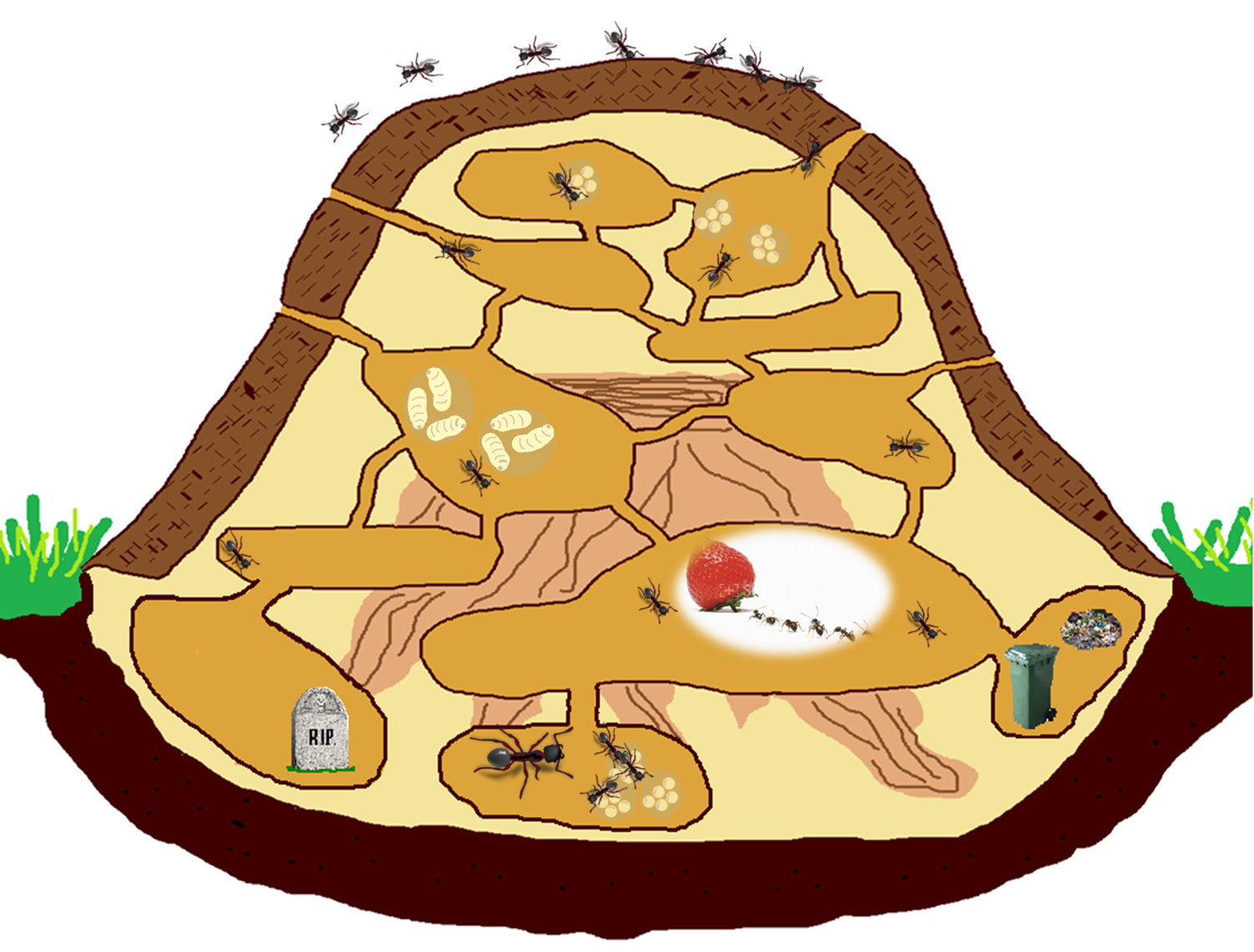Nests
Wood ants build large thatched mounds in which to live and aggressively defend both their nest and food resources. As their name suggests, they are associated with woodland, being found mostly in coniferous forest but also in mixed and broadleaved forests. Nests are usually south-facing to allow sunlight to warm the nest and well drained areas are favoured.
 Internal construction
Internal construction
The wood ant’s nest is a marvel of insect construction and contains up to 250,000 individual ants. Wood ant mounds vary tremendously in size and shape. Young nests are no bigger than a dinner plate while more mature nests can be up to 2 m tall. What you can see above ground is at least mirrored (and sometimes bigger) underground. Internally the nest contains a series of tunnels and chambers. The chambers contain the queen and brood, food stores, even a graveyard. Tunnel entrances can be opened or close to maintain optimal temperature and moisture.
Thatch
On the surface, the “thatch” is made of organic materials including pine needles, small twigs, moss, heather, dried grass and even pieces of lichen. The thatch is made in such a way that it intercepts the sun’s rays at right angles, acting like a solar panel to raise the temperature of the nest above that of its' surroundings. This is especially important early in the season when the ants are warming up to begin foraging. Temperture is crucial for brood development; workers will move the brood around the nest in order to provide them with the optimal temperatures for growth, sometimes bringing them onto the surface of the nest for an extra boost of warmth from the sun. The thatch also acts as an umbrella with each piece laid in a precise manner so that rain water trickles away from the nest, keeping it dry.

